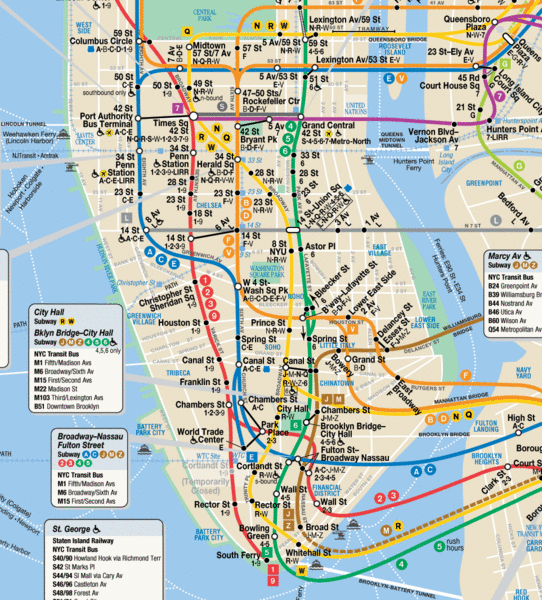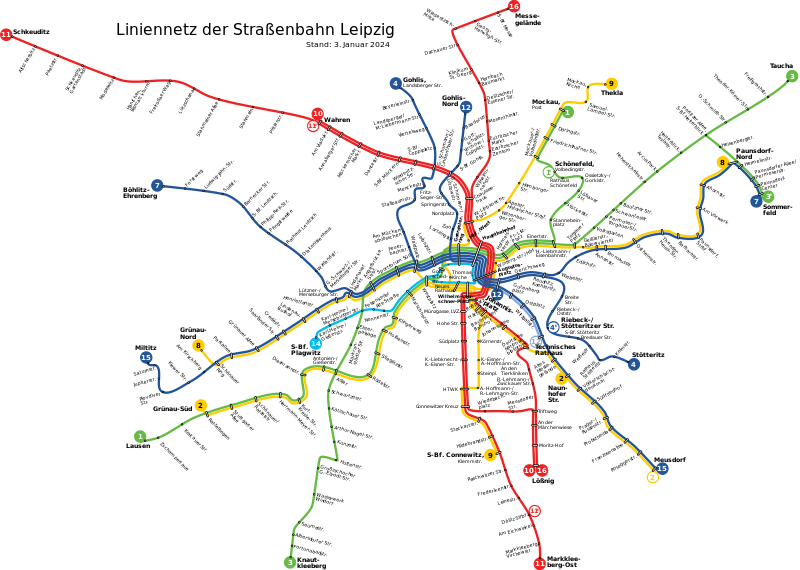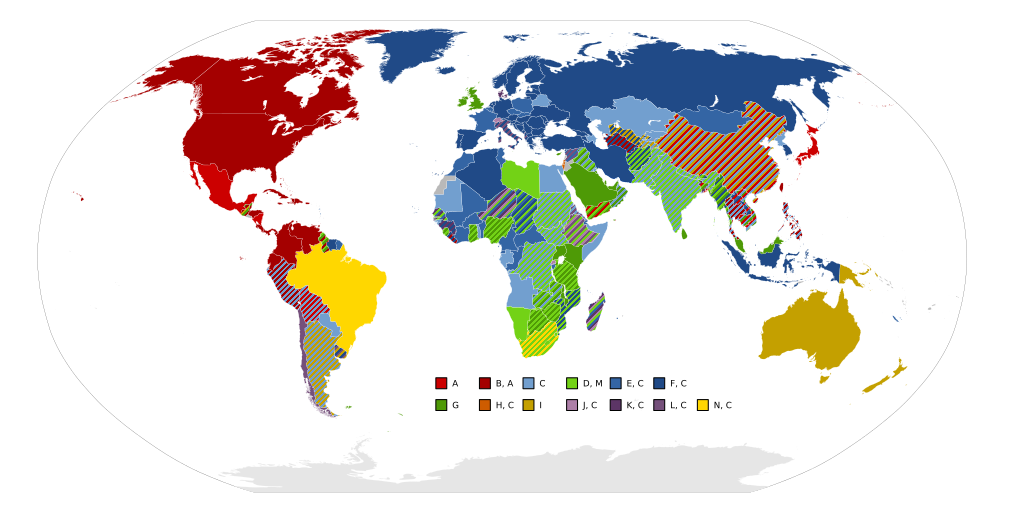You've Got Mail. Whatever It Takes. Part I
With courtesy of America Online and Federal Express. Just kidding.
Some time in the late 1990s, Deutsche Post featured a very romantic ad with the slogan "For letters to stay fresh, we bring them in one day!" and started with a young brunette girl with heavy make-up, her eyes hidden under her middle-long hair, applying perfume before closing her love letter. They show how every link in the chain gets to smell the perfume from the letter just as well, up to the final recipient.
Yes, the days when the owner of the world's first sex shop (Beate Uhse, back then called "feature shop for marital hygiene") drove from town to town to save money on stamps because town-only deliveries only costed 10 Pfennig have long been gone. On the other hand, whereas a letter from Hamburg to Munich just takes a day, a letter from the German side of the Oder River to the Polish side still takes two or even three days.
The Geography Of Postal Codes
Nodelescu Will Show You Germany Again And Again!
Germany has the most experience in the world when it comes to changing its postal code system. Due to the Blitzkrieg, the Reich introduced a very simple code system in 1941 with any code number indicating a Reichsgau (Nazi party district becoming a semi-official Reich district) or even Reichskommissariat, making it a prime alternate history target. Codes went from 1 to 24 with the occasional "a" or "b" letter attached on the way. They were only useful to differentiate various homonymous towns across Germany as experienced postal workers were made cannon fodders and their replacements lacked their savvy. This system survived the war with minor modifications, but got less and less applied. Note that Berlin used to have an own inner-city system that used general direction not unlike London and a two-digit number for the several neighborhoods, yet that's another story.
Actually it's been the 1960s when postal codes became en vogue worldwide. Blame it on the economic miracle or nascent automation, most modern systems in the First World seem to have been established in the 1960s and 1970s. If you look at countries that did their homework, you'll see that most postal codes should roughly equal the amount of mail they're supposed to get. You'd expect big cities to have a lot of postal code combinations (I don't say numbers in order to not upset our Brits) and rural codes to cover multiple villages and towns. Yet in Germany, this way only partially the case.
Both German states adopted four-digit postal codes in the 1960s, the West a bit earlier than the East and keeping reserves for reunification which weren't used when the time came. You can say that the entire Germany used to have 1,000 letter processing centers, practically one for each three initial numbers with most mail and delivery manually sorted and delivered by train. Most big cities used to have less than four digits (one or two) and when computerization mandated four digits, they were literallly "nilled up", 2 Hamburg became 2000 Hamburg and my own hometown went from 71 to 7100. In the East, two digts were the lowest. And yes, an entire big city used to have the same four-digit number as a postal code in West Germany. To compensate problems, every big city had postal zones like those in Berlin attached to after the city name. A letter to e.g. an address in the least pleasant parts of Berlin-Kreuzberg that used to have SO 36 as their zone code needed to be addressed 1000 Berlin 36. Things were different in the East where the zone code was integrated into the postal code from the start, at least in the biggest cities, so it was 1199 Berlin(-Adlershof) where East German Television broadcasted from (and a youth magazine just called itself after that number, Elf 99). If your company's Johnson grew long and strong enough to deserve an own zip code, you got a likewise own zone code. Second German Television was 6500 Mainz 500 and Otto Catalogue Delivery was 2000 Hamburg 888. This was a mess and German Unity made for a convenient moment to overhaul it from scratch. So yeah, they were too big to fit in there.
The Regime Change After The Regime Change
The five-digit system introduced on July 1, 1993 was a turning point in many ways. First of all, you needed a big register in order to find the fitting code for your desired address. More important however was the complete reorganization of mail processing.
Optical character recognition (OCR) became good enough for the majority of even handwritten postal codes on letters to be read out automatically and for the rest to go into an extra round where an officer sees any next two letters via CCTV in order to read and type in manually what's the postal code. This goes on twice a night, in the early night for the outgoing delivery and late at night for the incoming delivery. With processing becoming a quick and an entirely stationary affair, the mobile part of the delivery could be reduced to mere transport and trains could be changed for trucks and new "letter centers" were built on the greenfield from 1993 on until the last was completed in 1998. In retrospect, that must have been the year when said TV ad I mentioned in the beginning was aired. The regions may be color-coded for convenience, but the letter processing centers themselves are all interconnected to one another and the trucks go the direct route. The only real hub-and-spoke element is the International Post Center in Frankfurt where international mail is processed. The modern letter processing centers only count up to 82.

Deutsche Post also owns parcel service DHL with its European hub at Halle/Leipzig Airport. For our American readers, I'd note that the average European country is as small as a state of the US and what counts as national flights in the US would rather resemble international flights inside Europe and therefore any national airline will of course function as a hub for its nationals.
About other national systems
In most cases, the most principal region will start with a one or a zero.
The UK is an odd man out with its alphanumeric system, but even here we see a Britain-is-only-London syndrome as London's postal code regions equal their general cardinal direction inside London whereas the rest of the UK got its initial letters named after their biggest cities.
The US system starts at the East Coast from New England down south and then west. Whereas smaller countries with five digits tend to assign separate numbers for P.O. boxes and big business, the US introduced ZIP+4 for that matter and whereas the populace found it to inconvenient to adopt, modern IT knows to assign the correct plus-four appendix by the address for the comfort of USPS's mail men. For a country the size of the US, it's prudent to use three initial digits for assigning a specific SFC instead of just two as elsewhere. If independent, the most populous deserved five-digit system each on their own and the vast geography necessitates many small processing centers all over Flyover Country.
France employs its already numbered départements as the cornerstone for its postal code system, initially just using them and later, after breaking up the two old Seine (75) and Seine-et-Oise (78) départments into seven new ones (75, 78, 91-95), as initials for new five-digit codes. As initial numeration was purely alphabetic, the general region cannot directly be seen from the postal code. Most postal codes outside the big cities (where the last numbers match those of the local arrondissement) end with a zero unless it's for a P.O. box or a long Johnson under the CEDEX scheme. It's a visible compromise between old German-style parochialism and the demands of a modern urban system.
Italy is similar to France as it used its then 90 provinces in order to define its postal code areas, now there are 110 provinces and Milan's 20xxx is also shared by Monza. Yet its numeration follows some geographic logic, initial zero indicating Lazio (Rome region) and nearby Sardinia whereas otherwise running north-south.
Poland is like a French pastry called palmier or elephant ear:
It spirals out from Warsaw (0xxxx) in the east over the south to the west to spiral back into Lodz (9xxxx).
Former Czechoslovakia spirals out similarly counter-clockwise from Prague into the eastern and Slovakian lands to this day. 1 is Prague, 2 to 7 is the rest of Czechia, 8 to 0 is Slovakia.
Austria as a small country only needs four letters and, similar to France, makes Vienna's borough numbers affect their local postal codes. When I was in Vienna, I only needed to walk by a bank to know which borough I'm in and so I knew my hotel was in the
XIII. Bezirk, in 1130 Wien.









